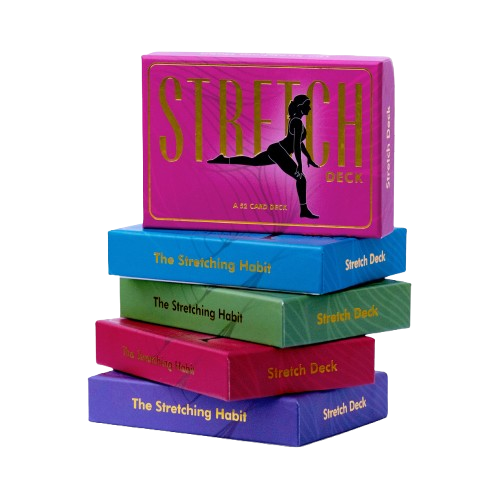Meet Claire Forrest
Stretching Expert & Manual Therapist

As a manual therapist, I realized that a majority of my clients’ ailments were aggravated and often caused by muscle tightness, lack of flexibility, reduced range of motion, and the big one … stress!
And that frequent simple stretches can easily improve and often prevent these conditions from occurring or getting worse.
When mentioning this to my clients, time and again I hear the same objection. I’m not sure what stretches to do, how long do I hold a stretch for, I got injured in the past from stretching, and the most common…I don’t have enough time to stretch, I’m too busy.
Claire Forrest
Founder and CEO
Learn More About Our Stretching Programs

FAQs
When do I need to stretch? Before of after exercise?
All stretches fall into 2 categories: Active or Passive. Active stretching should be done prior to exercise or an athletic event and passive should be done after. Please read our Blog post Making Stretching Easy to understand to find out more.
How long to I need to stretch a muscle for?
Any stretch for more than 3 seconds can help you feel better. Think of any time you have yawned and stretched naturally. Your body needed movement and your muscles needed oxygen so your body reached up and stretches out practically on it’s own. Stretching is typically done from 10 to 30 seconds to really help improve the health and flexibility. Athletes, exercise enthusiasts and yoga may hold poses and stretches for 1-3 minutes at a time. Regular Stretching becomes much more important the older you get.
I walk every day to be healthy. Why do I need to stretch?
Walking, Cardio and weight lifting are all really good forms of exercise. Walking is good to keep you mobile as you age, cardio is great for your heart health and weight loss and weight lifting is good for retaining muscle tone and staving off osteoporosis. But non of these relax and loosen the tension in your muscles that stress, anxiety and exercise puts on the muscles of your body. Simple stretching keeps the muscles loose and supple and maintains joint mobility and range of motion which are essential for athletes and the body as we age.
How do I know if I am overstretching?
Pain will tell you if you are over stretching. Pain is the body’s way of telling you something is wrong in your body. No pain, no gain is a phrase that the fitness world inaccurately applied to exercise but it is not right for weight lifting and certainly not right for flexibility training like stretching, Pilates or yoga. As you stretch, listen to your body and you will feel your muscles telling you when they are getting too tight. You can stretch up to that point but not past it or you will feel pain. Once you get to that point of pain, your Fight or Flight kicks in and your muscles will actually start to reflexively pull back against your stretch to protect itself from tearing or straining which is counter intuitive to what you are trying to do by stretching it in the first place!

The Stretch Deck
Our Classic Stretch Deck has 52 stretches, arranged in 5 stretching groups from head to toe.

Stretching On Demand
Our On Demand Video Library has hundreds of stretches for every part of your body. There are 5, 10 and 15 minute stretches, full body routines, sport specific and injury focused stretches. Our Stretch Education section teaches you about your body and the benefits stretching has to fight stress and anxiety.
